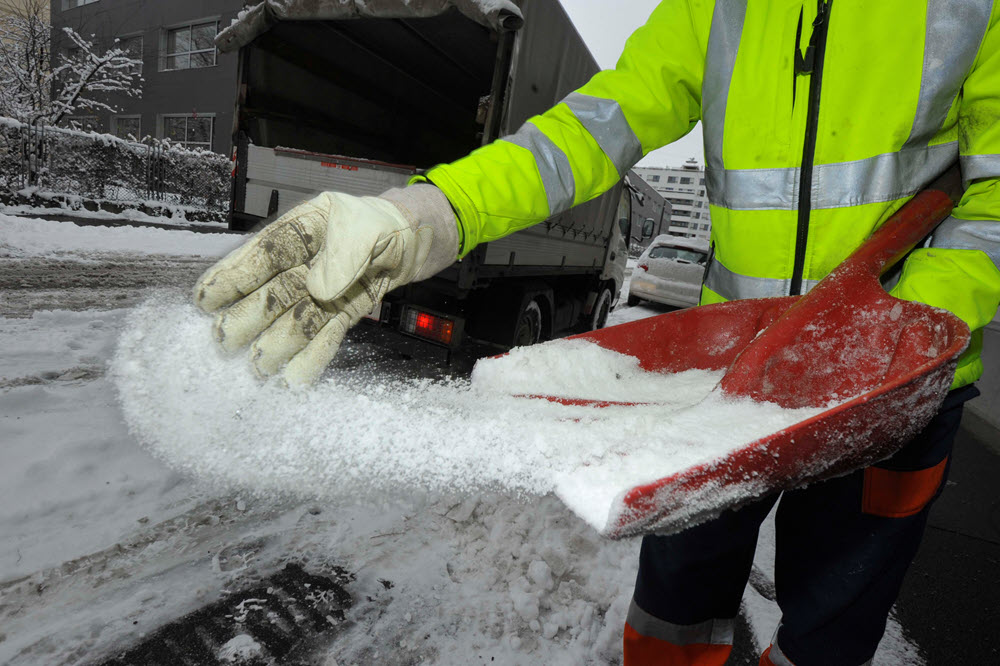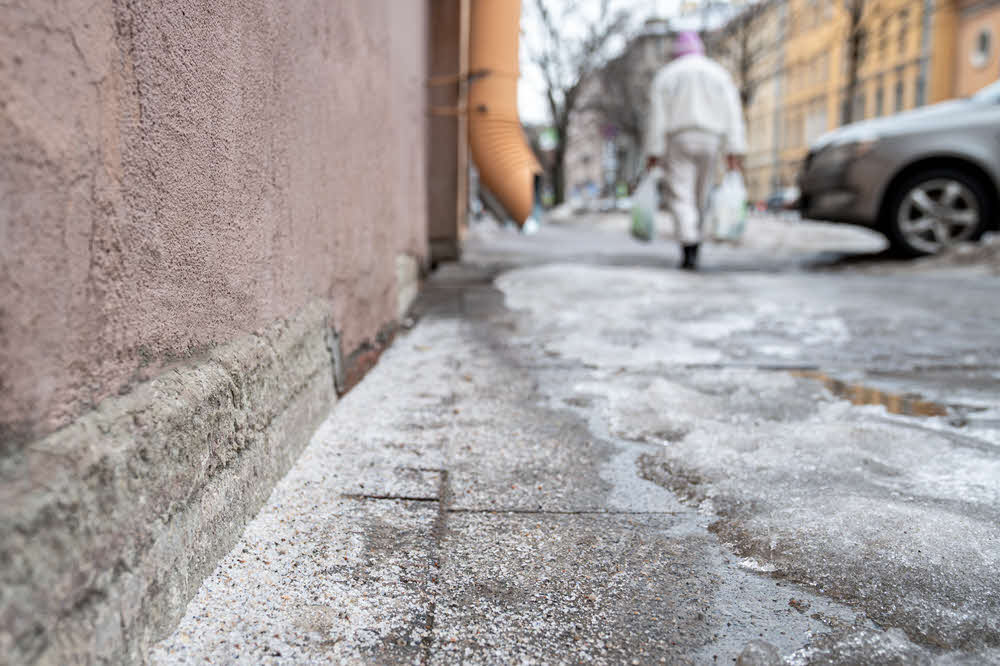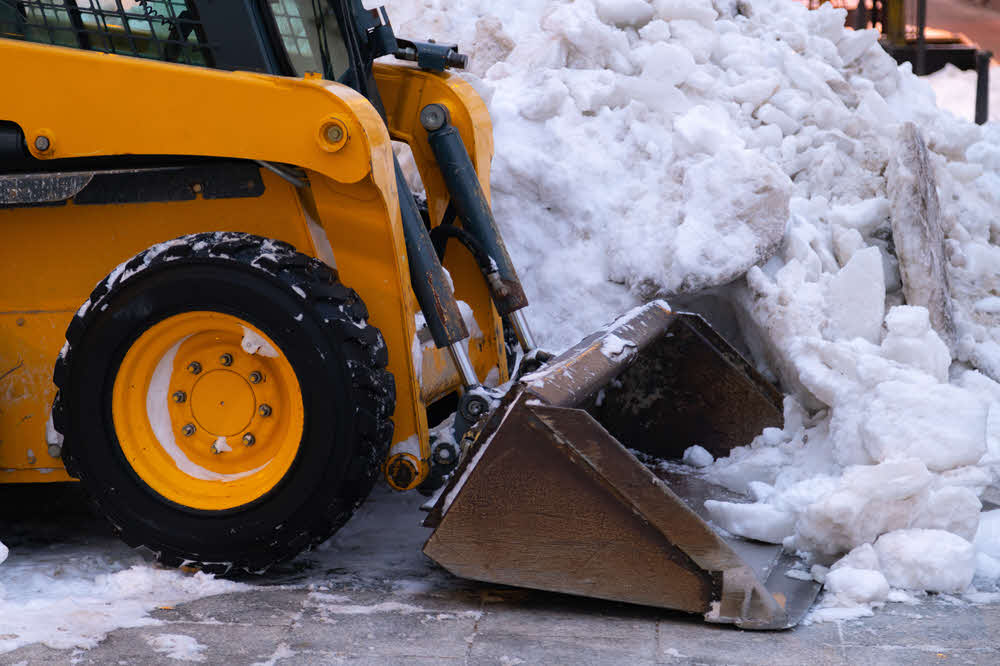Snow Salting Servicesin Madison Heights MI
Prevent Ice HazardsWith Expert Salting Services
We Are Locally Owned & Operated For Over 37 Years
Contact Us Today!
We Serve Businesses In And Around The Following Cities:
About Snow Salting Service
Introduction: Madison Heights and Snow Salting
When winter begins in beautiful Madison Heights, commercial properties’ routine entails dealing with persistent bouts of snowfall, turning the otherwise bustling cityscape into a potential field of slip-and-fall hazards. To combat this unavoidable challenge, a seamless solution, known among locals as “Snow Salting Service,” ensures business-as-normal even amidst the thickest snowstorms. This document will provide an extensive, informative analysis of Snow Salting Services, detailing the process along with its essential benefits and how local commercial entities can best harness its potential to maintain a safe outdoor environment during the winters.
The Snow Salting Process
The first stage of a Snow Salting Service is a pre-assessment, where professionals such as those at D&J Contracting evaluate the property’s dimensions and the potential areas that may become hazardous when it snows. Following the survey is the actual process of salting. The primary goal here is to apply a generous measure of rock salt or similar ice-melt compounds on identified areas to prevent ice from building up on surfaces, making them safer for pedestrians and visitors.
Primarily keen on commercial parking lot salting and business driveway salting, these services are expertly designed to address a business’ specific requirements. Balancing the effects of Snow Salting Service with environmental concerns is crucial. Hence the choice of ice melt agents, application volume, and techniques are all decided with careful consideration towards minimizing ecological impact.
The Benefits of Snow Salting Services
Snow Salting Services have a broad range of benefits. The most prominent is maintaining a business’ curb appeal even during heavy snowfall periods. This service ensures access sidewalks, driveways, and parking lots are safe and navigable despite challenging winter conditions.
But the benefits of employing such services go far beyond mere curb appeal. A well-salted and ice-free commercial property signifies a mindful business that values its customers’ and employees’ safety. Avoiding the legal complications and financial liabilities resulting from a potential slip-and-fall accident is another significant benefit. Snow Salting Services can also save businesses from the labor-intensive and time-consuming process of manually clearing snow and maintaining their commercial properties.
Real-world Applications of Snow Salting Services
Concrete examples of Snow Salting Services utility could be seen virtually anywhere in Madison Heights during the winter months. Be it a restaurant complex, a mall, business parks, or smaller office buildings, they all rely on these services to ensure their surroundings remain accessible.
A classic example is the diligent approach taken by restaurants and retail outlets located on the busy 12 Mile Road. Even amidst heavy snowfall, you’d never spot an icy parking lot or treacherous walkway that could deter customers. Thanks to walkway salting services and ice melt application services, business resumes as usual. And laid beneath the seamless experience are expert services provided by companies like D&J Contracting, ensuring a winter-ready business environment.
A compelling instance of successful snow salting is also observable in larger spaces like business parks, where constant foot traffic and vehicle movements can turn patches of snow into risky ice quickly. Thanks to parking lot salting services, the risk of slipping or skidding is significantly reduced. Patrons who appreciate this dedication to safety could likely prove more loyal, establishing a much-appreciated win-win scenario for businesses and their customers.
Final Thoughts
With a keen understanding of Madison Heights’ challenging winter conditions, a carefully selected Snow Salting Service not only helps maintain commercial properties’ appeal but also ensures a safer, smoother experience for everyone involved. As a vital component of winter property maintenance, investing in such a service could potentially safeguard you from unnecessary legal complications while fostering a reputation for caring about your customers and employees. Companies like D&J Contracting specialize in employing such services, ensuring that your business never skips a beat, even amidst the heavy snowfall of the Michigan winter.
Snow Salting Service Gallery


Call Us Today to receive your Free Quote for
Snow Salting Service in Madison Heights
Serving: Madison Heights, Michigan

About Madison Heights, Michigan
Originally part of Royal Oak Township, Madison Heights incorporated as a city by popular vote on January 17, 1955, and chartered on December 6 of that same year, becoming the tenth city government in southern Oakland County. At that time, the 7.2 square miles (18.6 km) city was one of the largest suburban communities in the Metro Detroit area. The first city hall was at 26305 John R Road, the former township offices. On April 5, 1963, a new municipal building was dedicated which is on the present location at 300 West Thirteen Mile Road. The city lies in the Interstate 696 (I-696) and I-75 corridor and is served by two primary school districts, Lamphere and Madison, as well as a full-service municipal government.
According to the United States Census Bureau, the city has a total area of 7.09 square miles (18.36 km), all land.
Although 91% of the buildings in Madison Heights are single-family homes or condominiums (approximately 9,800 residential property owners), 60% of the tax base is fueled by light industrial or commercial property. The city has 15 voting precincts, totaling more than 21,000 registered voters.
Madison Heights shares borders with Troy to the north, Royal Oak to the west, Hazel Park to the south, and Warren to the east. The eastern border of Madison Heights (Dequindre Road) is also the border between Oakland and Macomb counties.
There are more than 112 miles (180 km) of road within Madison Heights, of which the city maintains 105 miles (169 km), 95 miles (153 km) for snow removal, sweeping, and patching. Interstate 75 passes north to south on the west side of the city, and Interstate 696 is the major feature of its southern border. The junction of these two highways is shared with Royal Oak and Hazel Park on the southwest corner of Madison Heights.
| Census | Pop. | Note | %± |
|---|---|---|---|
| 1960 | 33,343 | — | |
| 1970 | 38,599 | 15.8% | |
| 1980 | 35,375 | −8.4% | |
| 1990 | 31,296 | −11.5% | |
| 2000 | 31,101 | −0.6% | |
| 2010 | 29,694 | −4.5% | |
| 2020 | 28,468 | −4.1% | |
| U.S. Decennial Census | |||
As of the 2020 United States census of 2020, there were 28,468 people and 13,487 households in the city. The population per square mile is 4,017.5.
The racial makeup of the city was 80.4% White, 7.8% African American, 0.2% Native American, 7.2% Asian, 0.1% Pacific Islander, 3.6% from two or more races. Hispanic or Latino residents of any race were 2.0% of the population.
There were 13,487 households, of which 14.7% spoke a language other than English at home. People under 65 years of age with a disability accounted for 11.1% of the city’s population, and 11.7% of the city’s population was living below the federal poverty line. Households without a broadband internet subscriptions made up 11.9% of the community.
16% of residents were under the age of 18; and 16.3% were 65 years of age or older. The gender makeup of the city was 49.4% male and 50.6% female.
As of the census of 2010, there were 29,694 people, 12,712 households, and 7,543 families residing in the city. The population density was 4,188.2 inhabitants per square mile (1,617.1/km). There were 13,685 housing units at an average density of 1,930.2 per square mile (745.3/km). The racial makeup of the city was 83.9% White, 6.4% African American, 0.5% Native American, 5.8% Asian, 0.1% Pacific Islander, 0.7% from other races, and 2.7% from two or more races. Hispanic or Latino residents of any race were 2.5% of the population.
There were 12,712 households, of which 27.5% had children under the age of 18 living with them, 41.0% were married couples living together, 12.9% had a female householder with no husband present, 5.4% had a male householder with no wife present, and 40.7% were non-families. 34.1% of all households were made up of individuals, and 11.8% had someone living alone who was 65 years of age or older. The average household size was 2.32 and the average family size was 3.02.
The median age in the city was 38.3 years. 20.4% of residents were under the age of 18; 8.7% were between the ages of 18 and 24; 30.4% were from 25 to 44; 26.6% were from 45 to 64; and 13.9% were 65 years of age or older. The gender makeup of the city was 49.1% male and 50.9% female.
As of the 2000 United States census, there were 31,101 people, 13,299 households, and 8,005 families residing in the city. The population density was 4,341.3 inhabitants per square mile (1,676.2/km). There were 13,623 housing units at an average density of 1,901.6 per square mile (734.2/km). The city’s racial makeup was 89.60% White, 1.82% African American, 0.44% Native American, 4.97% Asian, 0.03% Pacific Islander, 0.46% from other races, and 2.68% from two or more races. Hispanic or Latino residents of any race were 1.61% of the population.
There were 13,299 households, of which 26.9% had children under the age of 18 living with them, 45.2% were married couples living together, 10.5% had a female householder with no husband present, and 39.8% were non-families. 33.8% of all households were made up of individuals, and 12.3% had someone living alone who was 65 years of age or older. The average household size was 2.33 and the average family size was 3.02.
In the city, 22.1% of the population was under the age of 18, 8.1% was from 18 to 24, 35.4% from 25 to 44, 20.2% from 45 to 64, and 14.2% was 65 years of age or older. The median age was 36 years. For every 100 females, there were 95.8 males. For every 100 females age 18 and over, there were 92.9 males.
The city’s median household income was $42,326, and the median family income was $51,364. Males had a median income of $41,478 versus $29,345 for females. The city’s per capita income was $21,429. About 7.0% of families and 8.9% of the population were below the poverty line, including 10.8% of those under age 18 and 13.0% of those age 65 or over.
In 2008, 1.9% of the Madison Heights population were of Vietnamese descent. 168 Asian Mart, a 38,000-square-foot (3,500 m) supermarket, is the largest Asian supermarket in southeast Michigan, and one of the largest in the state. The Chinese Cultural Center is in Madison Heights.
The mayor of Madison Heights is Roslyn Grafstein, who was appointed as Mayor in August 2020 to fill a vacant seat.
Madison District Public Schools and Lamphere Public Schools have public schools serving Madison Heights.
Bishop Foley Catholic High School is a private school.
Four Corners Montessori Academy is a public charter school.
Call Us Today to receive your Free Quote for
Snow Salting Service in Madison Heights
Related Services in Madison Heights, Michigan
We Serve Businesses In The Following Zip Codes:
48007, 48015, 48021, 48026, 48035, 48036, 48038, 48042, 48043, 48044, 48045, 48046, 48047, 48048, 48050, 48051, 48066, 48071, 48080, 48081, 48082, 48083, 48084, 48085, 48088, 48089, 48090, 48091, 48092, 48093, 48098, 48099, 48225, 48230, 48236, 48310, 48311, 48312, 48313, 48314, 48315, 48316, 48317, 48318, 48397